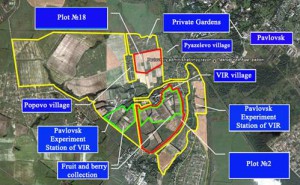It’s easy to assume that it’s only plant breeders that use genebank collections. But in fact there are clever people out there who are delving into genebanks for all kinds of different reasons. Two recent articles on rice illustrate this nicely.
In the latest Rice Today Tom Hargrove tells the story of the global odyssey of the rice varieties called Carolina Gold and White.
Carolina Gold and White show how genes of good crop varieties spread. The seeds made a remarkable journey: from Indonesia to Madagascar by boat almost 2,000 years ago, then to the wealthy and slave-driven Carolina plantations. Her seeds seem to have helped war-weary Confederate veterans start a new life along the Amazon in South America. Freed slaves may have taken her seeds back to Africa, which she once called home. Carolina Gold recently started a new life in South Carolina, and her white-hulled sister is a parent of an improved variety for upland rice farmers in Colombia and Panama.
Hargrove describes how it was by comparing contemporary seeds with genebank samples that part of that epic story was pieced together, and how it was from genebank samples that Carolina Gold cultivation was revived, albeit it on a much smaller scale, in the State which gave it its name, after almost a hundred years.
Meanwhile, EurekAlert has a piece on another famous, though rather more modern, rice variety: IR8. One of the Green Revolution varieties,
IR8 used to produce 9.5 to 10.5 tons per hectare, significantly more than other varieties in the 1960s when average global rice yields were around only 2 tons per hectare. But, when grown today, IR8 can yield only around 7 tons per hectare.
Why? Is it nature or nurture? Researchers “grew rice from original IR8 seeds preserved in the International Rice Genebank and compared it to rice grown from IR8 seeds continuously grown and harvested over the last few decades.” Genetically, they were found to be similar, so the 15% decrease in yield must be down to environmental changes, possibly including hotter nights:
the findings demonstrate the need for ongoing or “maintenance” breeding because it allows rice plants to cope with a changing environment.
So, even when genebank accessions are not used by breeders, the results can end up being of use to breeders.

